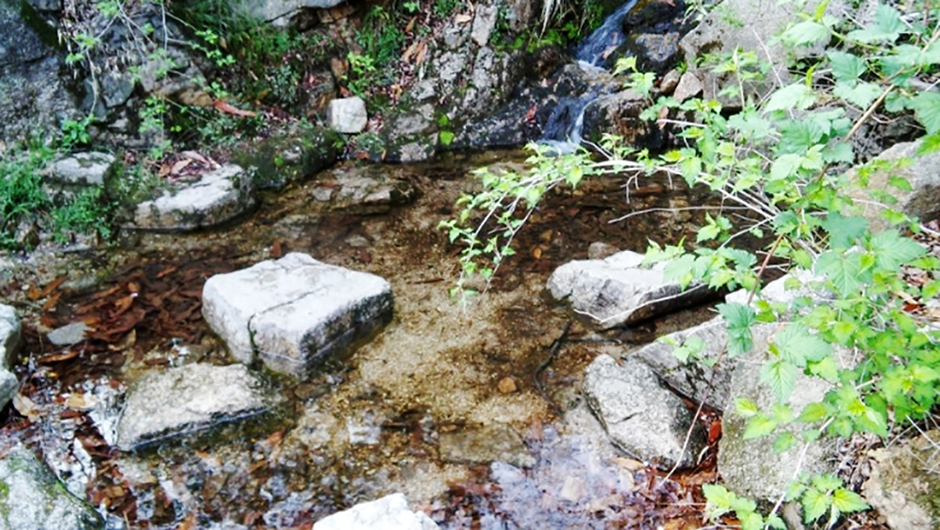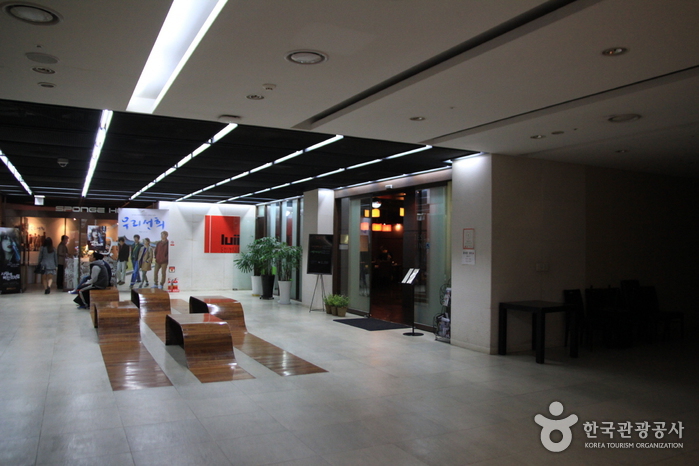Chopard - Lotte Avenuel Branch [Tax Refund Shop] (쇼파드 롯데 에비뉴엘)
6.7Km 2024-04-18
2F, 73, Namdaemun-ro, Jung-gu, Seoul
-
Panerai - Lotte Avenuel Branch [Tax Refund Shop] (파네라이 롯데 에비뉴엘점)
6.7Km 2024-04-18
2F, 73, Namdaemun-ro, Jung-gu, Seoul
-
Chaumet - Lotte Avenuel Branch [Tax Refund Shop] (쇼메 롯데에비뉴엘점)
6.7Km 2024-04-23
3F, 73, Namdaemun-ro, Jung-gu, Seoul
-
MyungBo Inc - Lotte Avenuel Branch [Tax Refund Shop] (명보아이앤씨 에비뉴엘)
6.7Km 2024-06-27
73, Namdaemun-ro, Jung-gu, Seoul
-
On The Spot - Myeong-dong Branch [Tax Refund Shop] (온더스팟 명동점)
6.7Km 2024-04-18
37-4, Myeongdong 8-gil, Jung-gu, Seoul
-
Suseongdonggyegok Valley (수성동계곡)
6.7Km 2023-08-17
185-3, Ogin-dong, Jongno-gu, Seoul 서울특별시 종로구 옥인동
Suseong-dong Valley's stream runs down from Inwangsan Mountain and joins Cheonggyecheon Stream, and it is said that the name of the village was called Suseong-dong during the Joseon dynasty due to the loud and clear sound of the flowing water. It appears in the painting "Jangdong Palgyeongcheop," which is Jangdong Eight Scenic Views, that depicts the eight scenic views of Bugaksan Mountain and Inwangsan Mountain as well as in other historical books of the Joseon dynasty as a place of scenic beauty. The valley was so famous for its beauty, that Prince Anpyeong of the Joseon dynasty built his house "Bihaedang" to fully enjoy the view, and the valley and its stone bridge were designated as a cultural property of Seoul in 2010.
The Saem - Myeong-dong Branch (No. 1) [Tax Refund Shop] (더샘 명동1호점)
6.7Km 2024-04-16
41, Myeongdong 8-gil, Jung-gu, Seoul
-
Luii (루이)
6.7Km 2024-07-17
40, Sejong-daero 21-gil, Jung-gu, Seoul
+82-2-736-8889
Luii is a Chinese restaurant operated by a veteran chef with extensive experience in Chinese cuisine. The restaurant has several rooms of different sizes to accommodate various events. It also has a VIP room for more private gatherings.
Banila CO. - Myeong-dong Branch [Tax Refund Shop] (바닐라코 명동점)
6.7Km 2024-04-22
38, Myeongdong 8-gil, Jung-gu, Seoul
-
Innisfree - Myeong-dong Station Branch [Tax Refund Shop] (이니스프리 명동역)
6.8Km 2024-04-18
2F, 43, Myeongdong 8-gil, Jung-gu, Seoul
-
![Chopard - Lotte Avenuel Branch [Tax Refund Shop] (쇼파드 롯데 에비뉴엘)](http://tong.visitkorea.or.kr/cms/resource/10/2890310_image2_1.jpg)
![Panerai - Lotte Avenuel Branch [Tax Refund Shop] (파네라이 롯데 에비뉴엘점)](http://tong.visitkorea.or.kr/cms/resource/42/2890442_image2_1.jpg)
![Chaumet - Lotte Avenuel Branch [Tax Refund Shop] (쇼메 롯데에비뉴엘점)](http://tong.visitkorea.or.kr/cms/resource/65/2890465_image2_1.jpg)
![MyungBo Inc - Lotte Avenuel Branch [Tax Refund Shop] (명보아이앤씨 에비뉴엘)](http://tong.visitkorea.or.kr/cms/resource/62/3314562_image2_1.jpg)
![On The Spot - Myeong-dong Branch [Tax Refund Shop] (온더스팟 명동점)](http://tong.visitkorea.or.kr/cms/resource/42/2878642_image2_1.jpg)



![Innisfree - Myeong-dong Station Branch [Tax Refund Shop] (이니스프리 명동역)](http://tong.visitkorea.or.kr/cms/resource/29/2878629_image2_1.jpg)
 English
English
 한국어
한국어 日本語
日本語 中文(简体)
中文(简体) Deutsch
Deutsch Français
Français Español
Español Русский
Русский